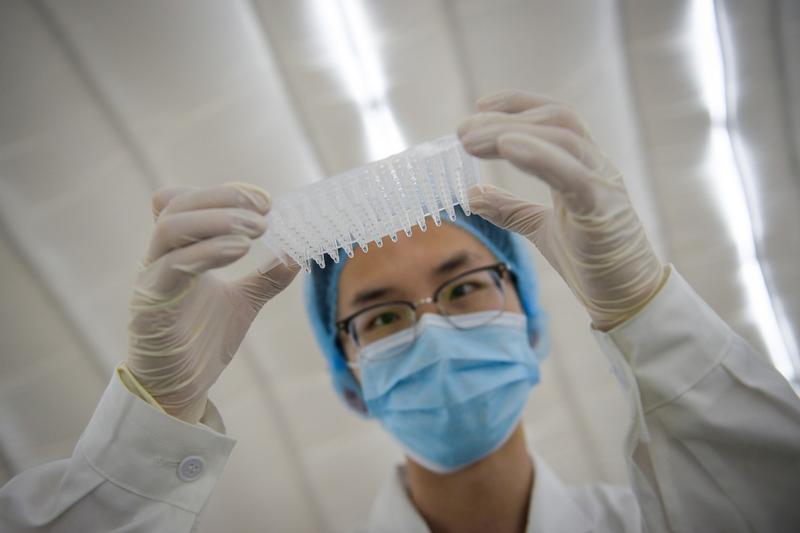 A medical worker checks nucleic acid samples at the Huoyan, Beijing's first air-inflated testing lab, on July 1, 2020. (PHOTO / XINHUA)
A medical worker checks nucleic acid samples at the Huoyan, Beijing's first air-inflated testing lab, on July 1, 2020. (PHOTO / XINHUA)
China's nucleic acid testing facilities should shorten turnaround times by delivering test results within six hours for patients at fever clinics, 12 hours for other patients visiting hospitals and their companions, and 24 hours for those who voluntarily take the tests, according to a guideline released by the State Council's Joint Prevention and Control Mechanism on Thursday.
In addition to ensuring the timely deliverance of results, local governments should adopt a uniform pattern of testing reports and make sure results will be made available through medical facilities, online portals or postal services
The guideline, published on the website of the National Health Commission, urges local governments and medical institutions to implement standardized management of nucleic acid testing, ramp up reserves of relevant resources and enhance testing capacities in preparation for rising demands amid potential new outbreaks.
In addition to ensuring the timely deliverance of results, local governments should adopt a uniform pattern of testing reports and make sure results will be made available through medical facilities, online portals or postal services.
According to the guideline, local governments should obtain comprehensive and detailed knowledge about the testing capacities of all laboratories, the condition of testing equipment and available personnel and protective resources. Approval applications from new testing facilities should be handled in a timely manner.
ALSO READ: Beijing ups its nucleic acid testing capability
Reserves of nucleic acid test resources, including hardware equipment, consumable products and testing staff, should also be ramped up to prepare for possible new clusters of infections, the guideline said.
Health authorities above county-level are required to formulate emergency response plans that will facilitate swift mobilization of resources and rapid increase of testing capability.
Provincial-level governments can intervene to make up for shortfalls in areas with limited testing resources, and acute demands can be fulfilled by applying for assistance from the joint prevention and control mechanism.
Local governments should also ramp up infrastructure at tertiary general hospitals and infectious disease hospitals to ensure they are capable of carrying out nucleic acid testing independently.
Each county will select one medical institution and focus on improving its testing capacity.
Health institutions must submit testing results from the previous day to the platform set up by the National Center for Clinical Laboratories by 1 pm while ensuring data accuracy and privacy protection.
READ MORE: Official: China's daily nucleic acid testing capacity tops 3m
Training that covers key steps in testing and examinations on testing facilities will also be enhanced, the guideline said.


